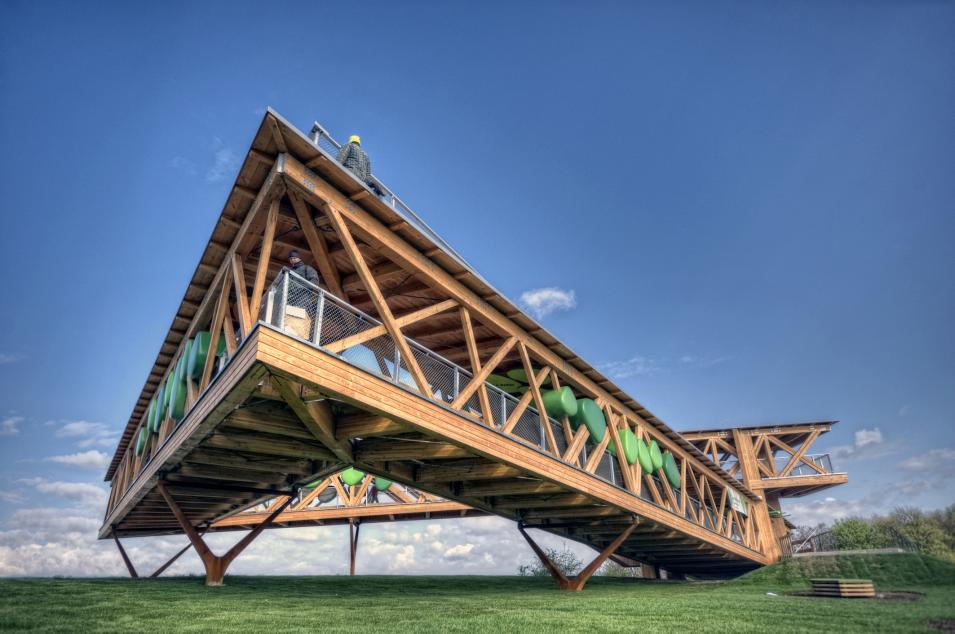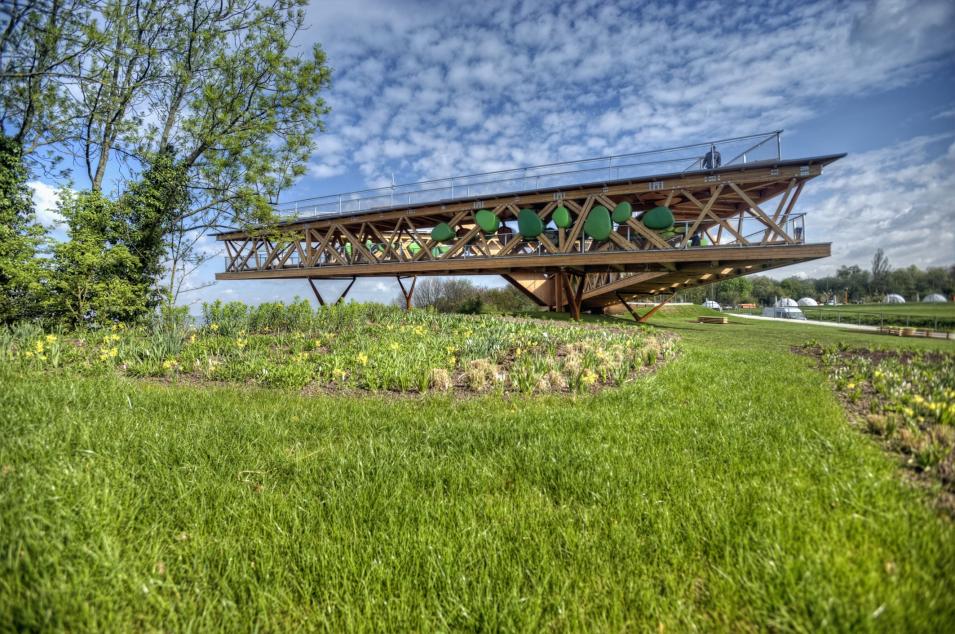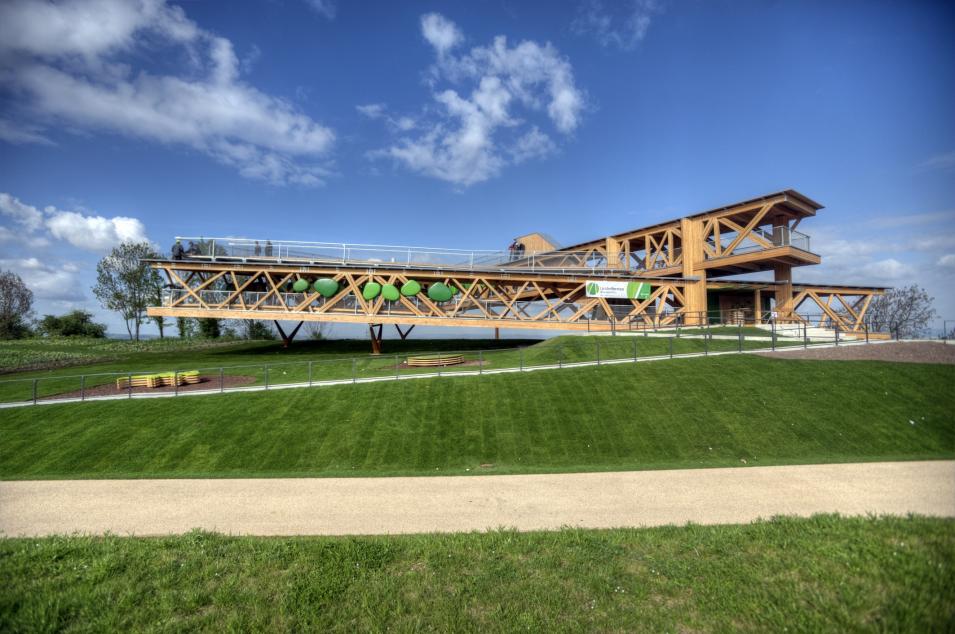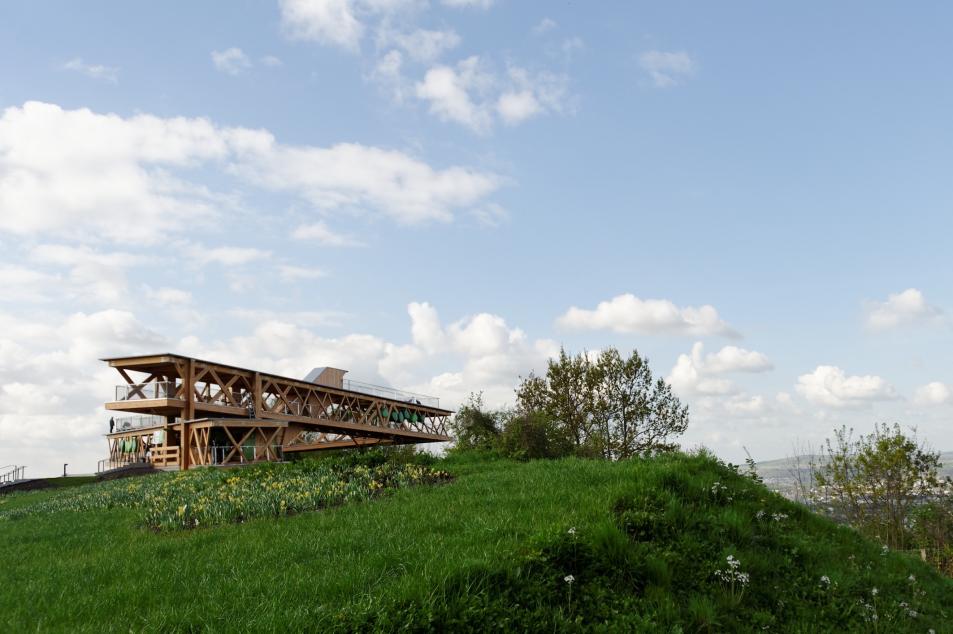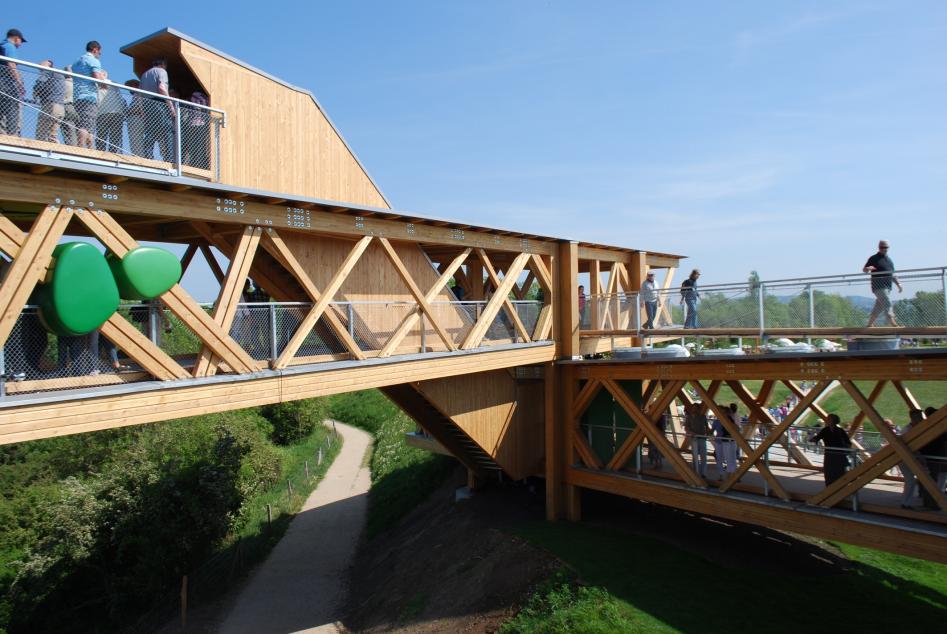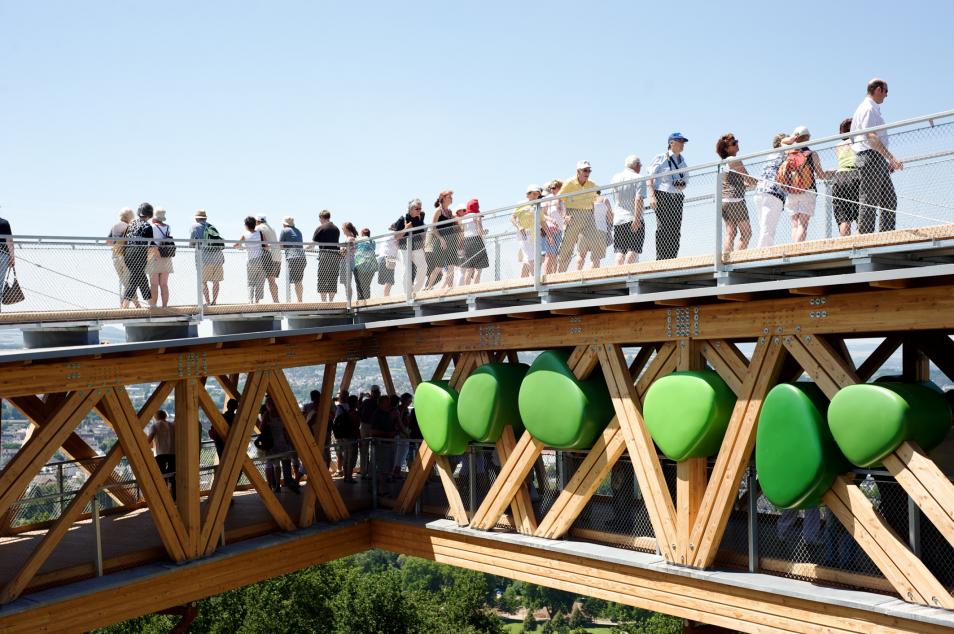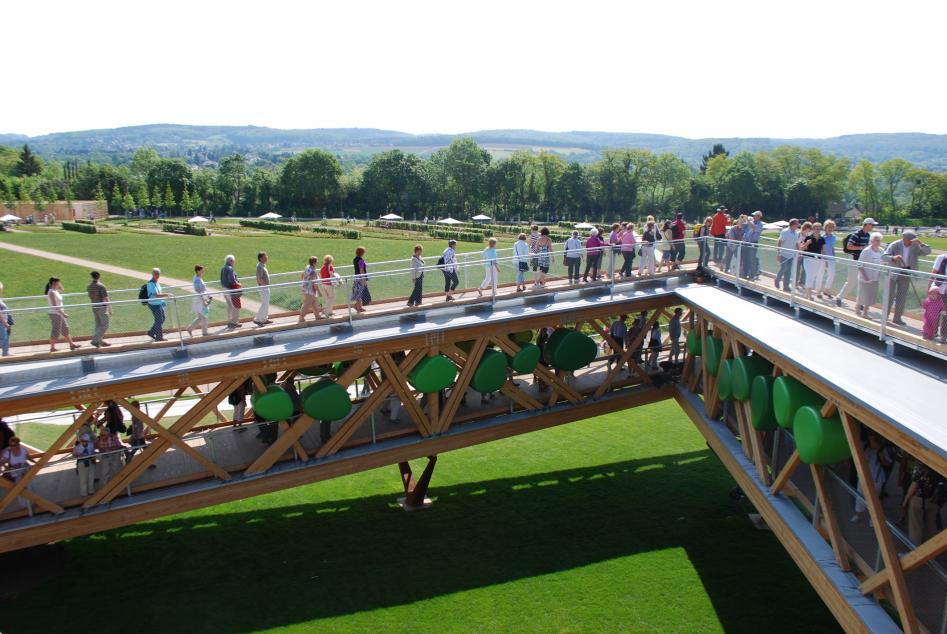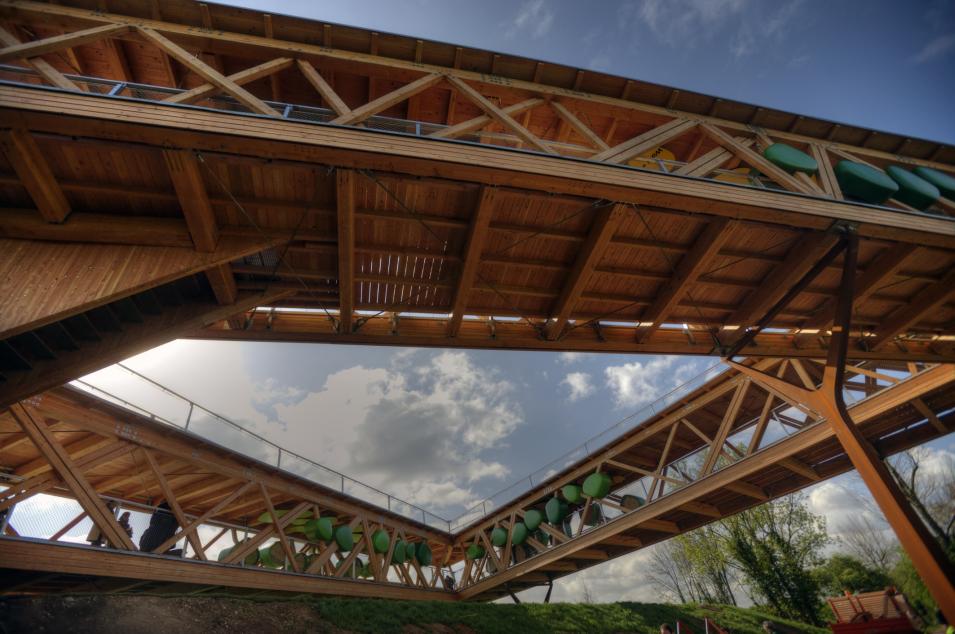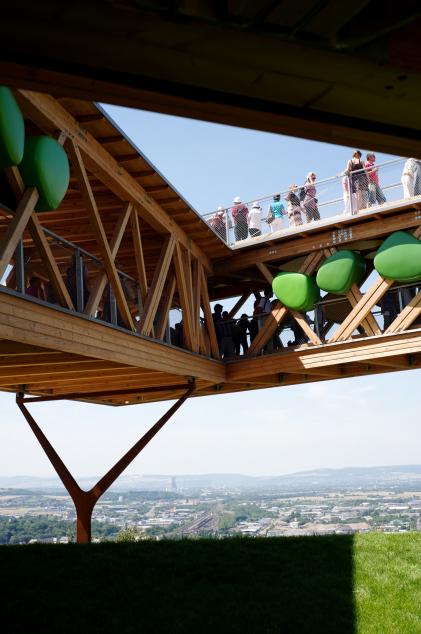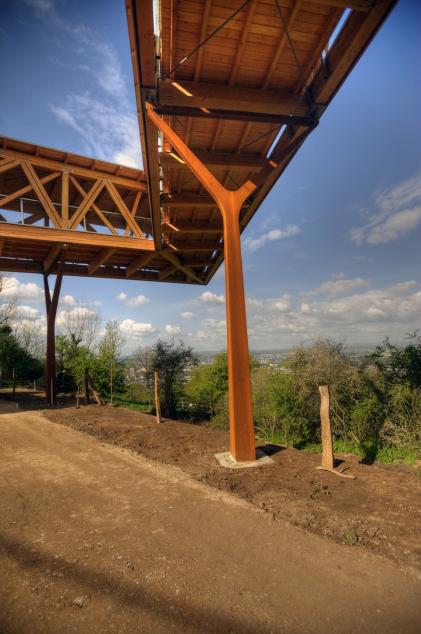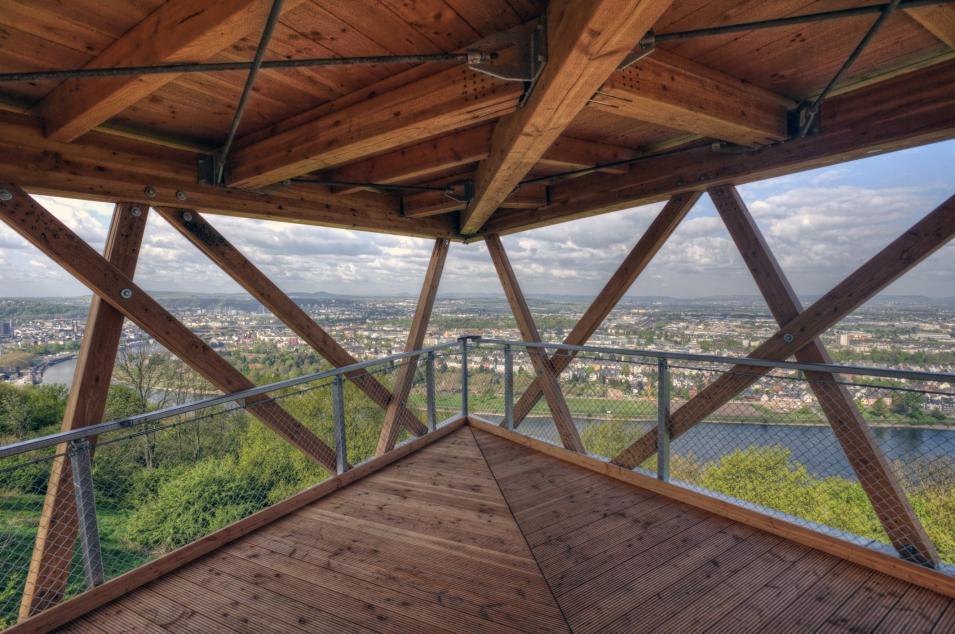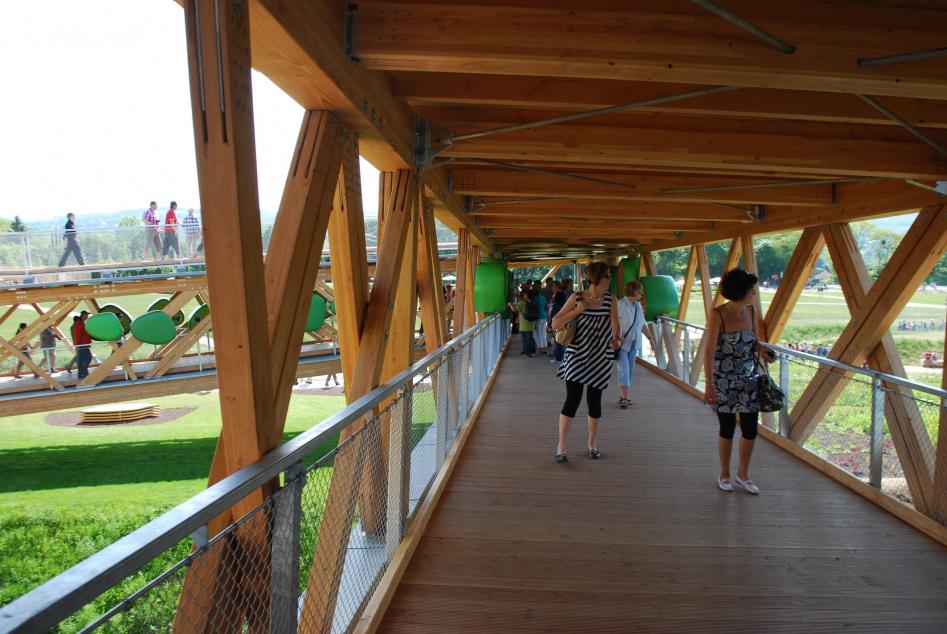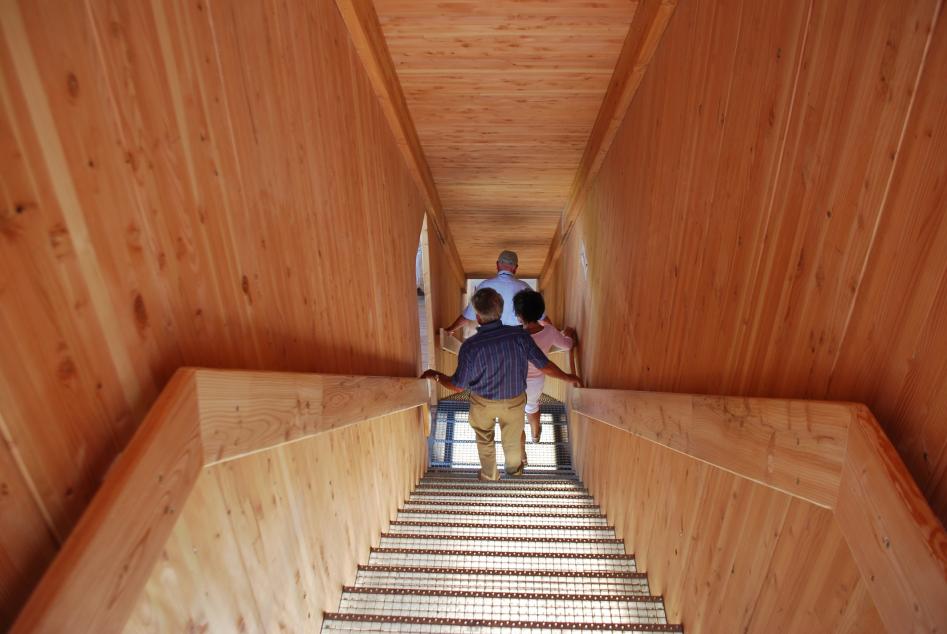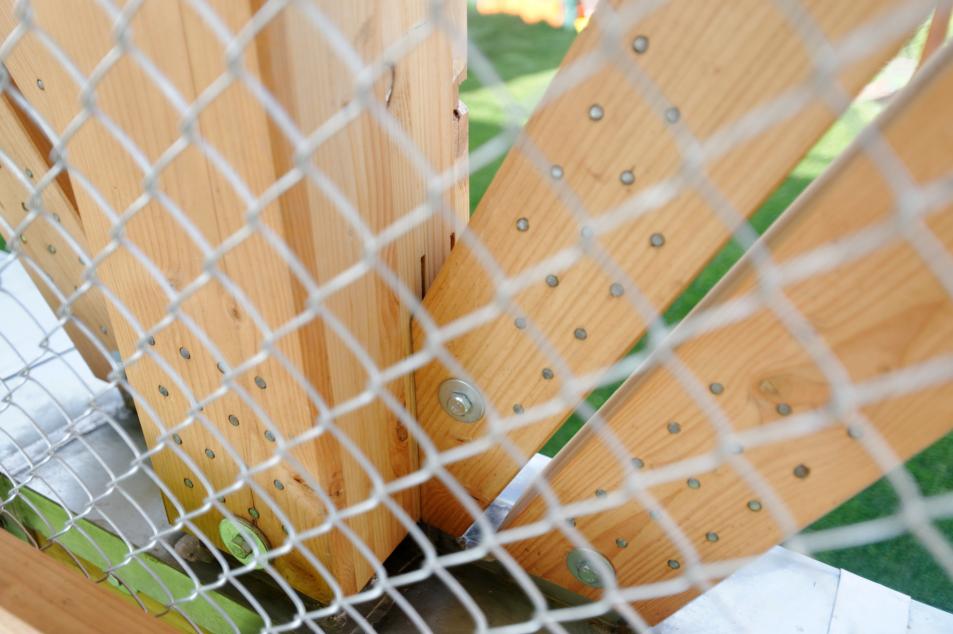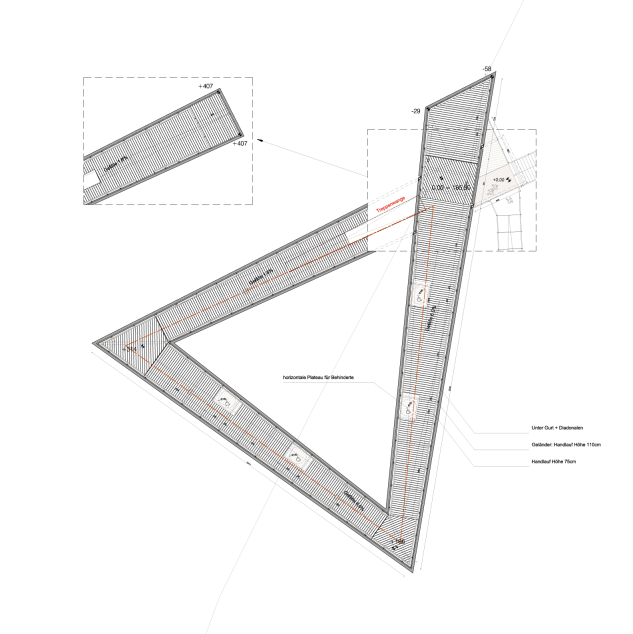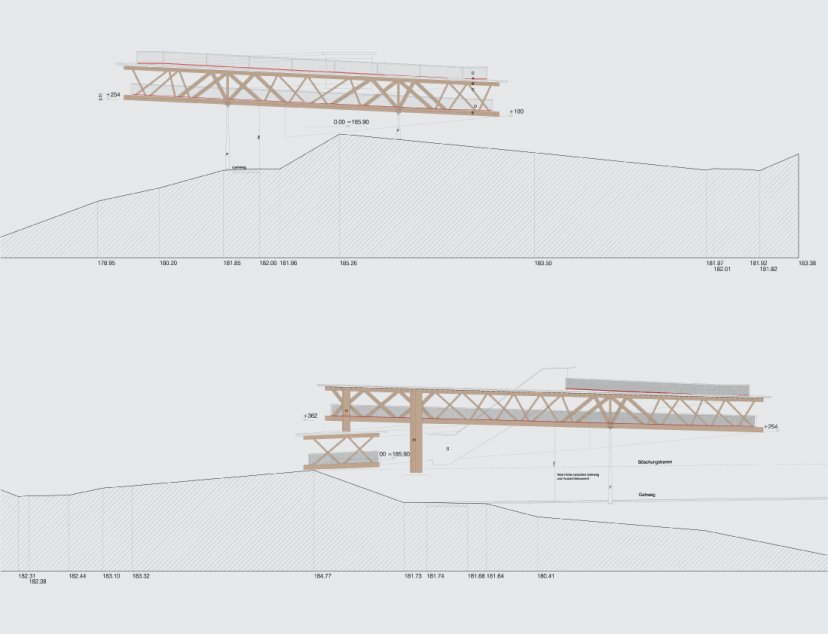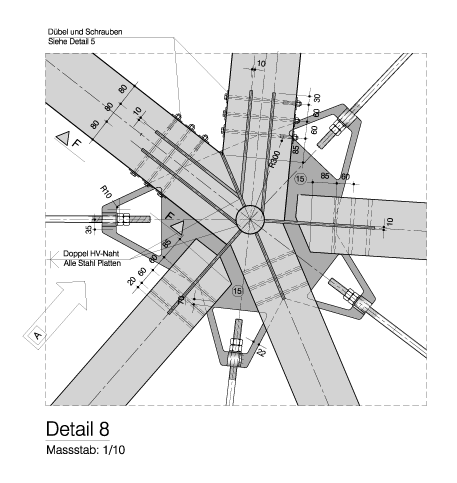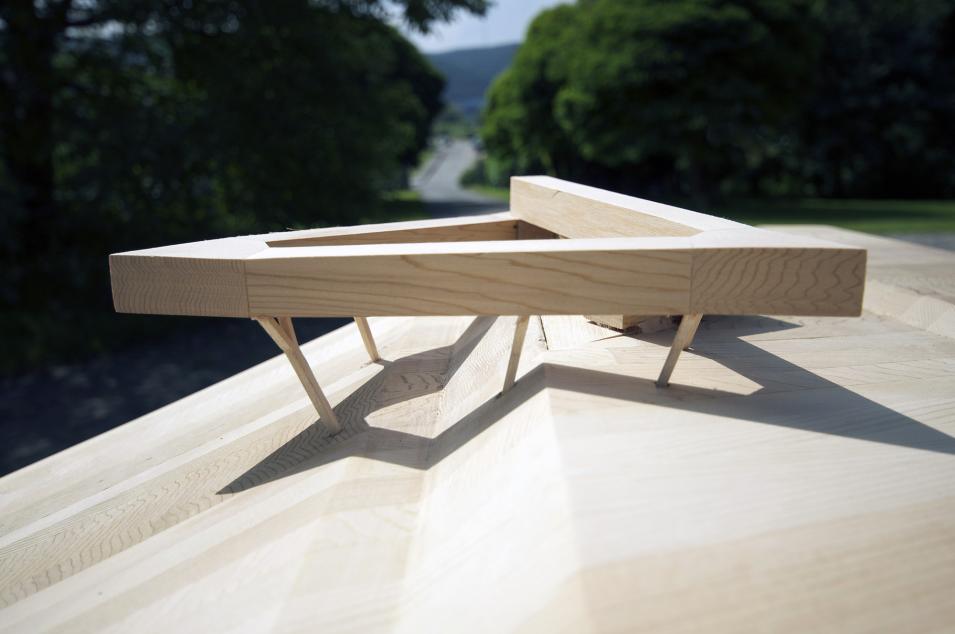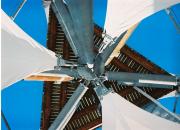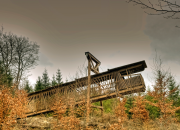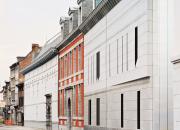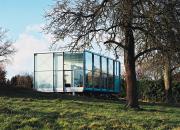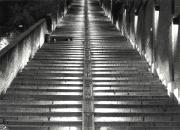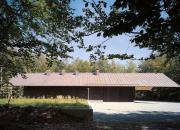Description
Investing a historic site with cultural purpose
In 2011, Koblenz was chosen as the site for the Bundesgartenschau, a biennial horticultural show that drew 3.6 million visitors. Various structures were erected for the occasion, including a belvedere designed by Dethier Architectures. In addition to providing a lookout point, the belvedere has become a symbol of the city.
The horticultural show
The Bundesgartenschau is a large-scale event, and the city of Koblenz needed an infrastructure capable of meeting the challenge. Part of the preparations involved an international competition for the construction of a belvedere, to be built on the site of the Ehrenbreitstein Fortress, which overlooks the confluence of the Moselle and Rhine rivers. The fortress is an outstanding site that became a popular tourist attraction after the First World War, and it has been placed on UNESCO's World Heritage List.
A hollow triangle
The belvedere is in the shape of a hollow triangle positioned on the plateau overlooking Koblenz. A walkway, accessible to visitors with limited mobility, leads from a gallery – a potential exhibition space – to the roof, along a pathway offering, by turns, views of the park, the city and the belvedere itself. The cantilever symbolises the project: it extends more than 15 metres out over the valley, and rises 10 metres above the ground. The choice of materials (native wood species for the structure and walkway, and Cor-Ten steel for the structural elements), meant that the entire construction could be pre-fabricated. The marriage of architectural research, and engineering to ensure stability, have resulted in a lightweight structure with dynamic visitor circulation. The lateral trusses create a mosaic of the surrounding countryside and allow the structure to be relatively free-standing.
A symbol of the city of Koblenz
With its formal, high-tech design, the belvedere offers a vision of modernity. The integration of a maximum number of contextual characteristics reflects a willingness to foreground the perception of nature. A correct solution needed to be found so that, in a completely unostentatious manner, the structure could stand as a symbol of Koblenz. Moreover, it was essential to enable each visitor to have a meaningful, subtle encounter with the surroundings. The choice of Douglas fir and other materials – and above all an examination of the site's morphology – allowed this "architectural object" to encompass these concerns. As a large-scale construction, the structure can be seen from afar, but its grace and horizontality allow it to blend harmoniously into the valley's landscape. The surrounding park's features were also determining factors. In response to the organisers' request that the project respect the historic nature of the site, the belvedere's location and angular design were chosen to reflect the fortress's foundations and the garden pathways, which appear to cantilever out over the valley and the Deutsches Eck.
Technical sheet
Construction of a wooden Belvedere, for the 2011 Bundesgartenschau
Localization
Longitude: 7° 35' 42.72" E

